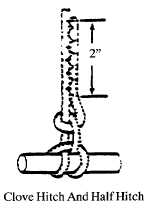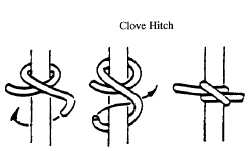TM 10-1670-292-23&P 0038 00
0038 00-2
6. Hold the adjacent line and the new line tightly together at the lower lateral band; trace both lines, from
the canopy skirt to the link assembly, under equal tension. Mark the new line at a point even with the
inside edge of the link. Apply equal tension to both lines and check correctness of marking.
7. Relieve tension on all lines and attach the new suspension line to the link assembly with a clove-hitch
and a half-hitch.
8. Drawing the new line down through the V-tab may reverse the procedures above; attach the new line
to link assembly, then to the canopy skirt.
9. Extend each tie running end toward the canopy skirt and, beginning at a point 2-inches above the
knots made in step 7., secure each tie running end to the replacement canopy line body by stitching a
3/16-inch-wide by 2-inch-long double-throw, zig-zag stitch formation toward the connector link
assembly. Finish each stitch formation as close as possible to the securing knots and trim each
running end to ¼-inch. Use size E, nylon thread, and 7 to 11 stitches per inch.
10. Compare the knots securing each end of the replacement canopy line with the adjacent knots made
on the connector link assembly to ensure compatibility. In addition, trace each end of the replacement
line from the connector link assembly to the canopy skirt to ensure proper attachment, position, and
sequence.
11. Sew the anti-inversion net to the new suspension line using a medium-duty zig-zag sewing machine, 5
to 8 stitches per inch, and a 1/8-inch throw. Extend the stitching above and below the net by ½-inch.
END OF WORK PACKAGE



